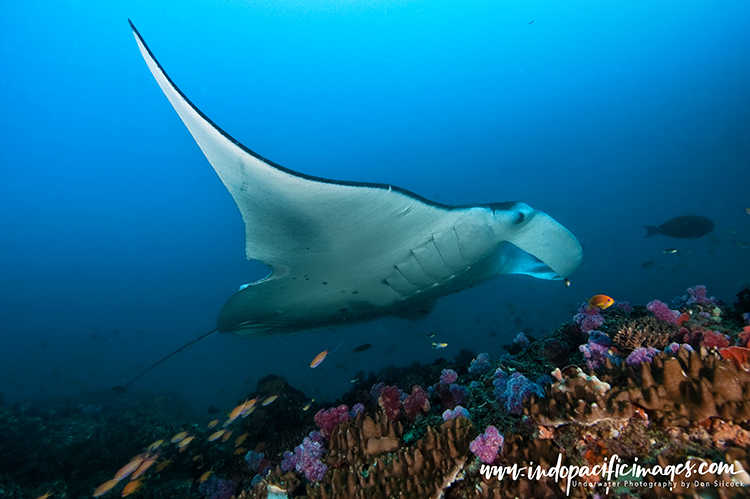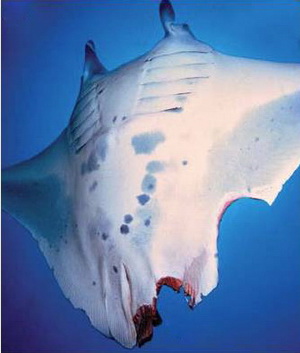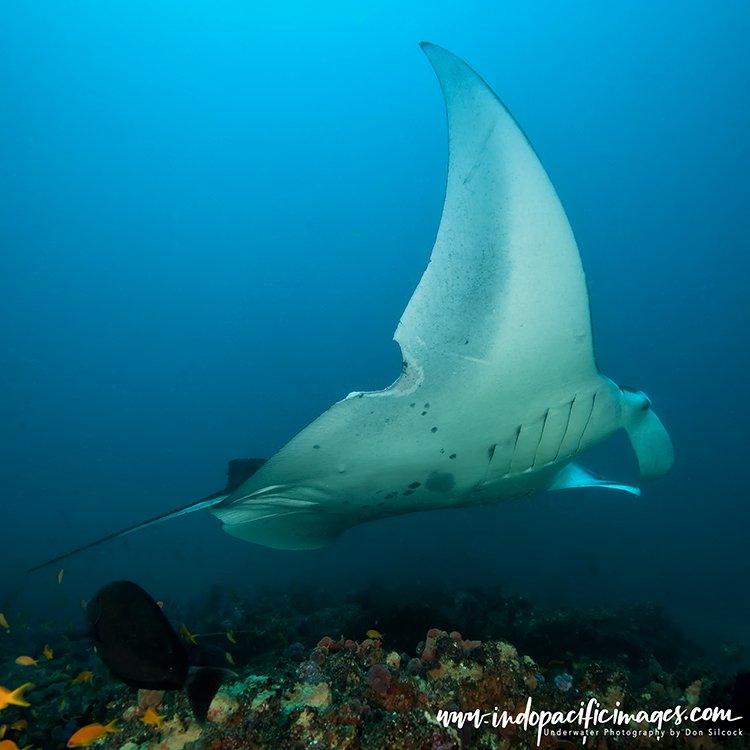Tofo Manta Rays… These magnificent creatures have traditionally been considered as solitary animals that demonstrate very little social interaction. Apparently only aggregating together as part of their elaborate, but rarely observed, courtship and mating ritual. Or at special cleaning stations where they gather to be relieved of their parasites.

Spectacular but periodic aggregations do occur around seasonal concentrations of a rich food source. Such as the coral spawning at Ningaloo Reef in Western Australia. Or the huge gathering of whale sharks during the “Afuera’’, north of Isla Mujeres near the Yucatan Peninsular in Mexico.
However a more recent school of thought is that manta rays are actually highly social animals. And that sociability is why they have such highly developed intelligence and the largest known brain of any fish.

Either way a manta ray experience is on the “must-do” list of most divers and underwater photographers. And what is so special about Tofo is the sheer number of manta rays in the area. With about 750 individuals specifically identified and an estimated total population of around 1400. Whereas at other major aggregations 300 to 400 manta rays is the norm…
Tofo Manta Rays – Why Tofo?
The Tofo area benefits from a quite extraordinary set of circumstances. Firstly the southern Mozambique coastline has unique counter-cyclic eddies that produce a rich year-round source of zooplankton. All of which is concentrated in a 200km stretch of coastline, with Tofo as the epicenter.

The availability of this reliable food source means that the area plays a very important role. And field research by the Marine Megafauna Foundation has found that around 75% of the identified mantas are female.
Indicating the area is probably a critical mating-breeding-birthing area.
Further research by the foundation has shown that the stretch of coastline is also an important manta ray migratory corridor.
One which has become a hunting ground for the diverse shark population in the area. And the majority of the mantas have some form of shark bite injury.
The attacks appear to be random and opportunistic in nature. Whereby the shark spots the manta and then attacks from behind. Right in the ray’s blind spot…
Usually the shark manages a single bite before the startled manta accelerates away towards safety. It’s almost (but not quite…) a win-win situation. Because the shark is happy to have had a “manta snack” while the manta is presumably happy to have survived! And, because all of it’s main organs are concentrated around its core, such attacks are rarely if ever fatal.
Investigation of the actual wounds indicates that the majority of the injuries are the result of tiger and bull shark attacks. However, a total of 11 other sharks have also been positively identified as the predator.
Tofo Manta Rays – Cleaning Stations
Large marine creatures inevitably suffer from significant numbers of tiny parasites. Which are extremely difficult for them to remove and, while breaching is known to be a way of communicating, it is also thought to be a form of shock treatment used to shake them free.
But just as large reef fish and moray eels develop relationships with smaller fish and shrimp. Allowing them to feed on their parasites, under a temporary truce in the eternal cycle of hunt and eat. Mantas also frequent specific “cleaning stations”, where they will hover patiently while cleaner fish perform a similar routine.

Cleaning stations, such as the one at Gona Bara Bara island in Milne Bay, Papua New Guinea. Or at Manta Mantra in the Dampier Strait, Raja Ampat, are the perfect places to observe these magnificent creatures as they linger and allow the parasites to be removed.
However it is unusual for individual mantas to remain around a cleaning station for much more than an hour. But in the Tofo area it is quite normal for mantas to remain for several hours at a time. Because not only are their parasites being removed, their wounds are being cleaned of dead and infected flesh, thus allowing them to make a full recovery from their attacks.
Interestingly it has been observed that different types of fish service different parts of the mantas. With butterfly fish specializing in the bite wounds, while sergeant majors clean the manta’s mouths and cleaner wrasse do the gills.
Tagging of the mantas has established that they only visit the cleaning stations during the day. Never at night or dusk/dawn – thus avoiding the main shark activity periods.
Tofo Manta Rays – Code of Conduct
The presence of the manta rays in the Tofo area is clearly a delicately balanced mechanism. And while they offer a very special opportunity for divers to see them close-up, the intrusion of divers could easily upset that fine balance.
Therefore the Marine Megafauna Foundation and the dive operators have developed a Code of Conduct for Tofo Manta Rays – to be followed by scuba divers when on the reefs that host the cleaning stations.
Divers are not allowed to enter the immediate “comfort zone” of the manta rays at the cleaning stations. Instead there are designated observation areas where the divers are positioned so that the mantas are not intimidated by their presence. What this often means is that the mantas will come and investigate the visitors meaning that the encounters can be just as intimate but very much on their terms.
Back To: The Complete Guide to Diving Tofo
